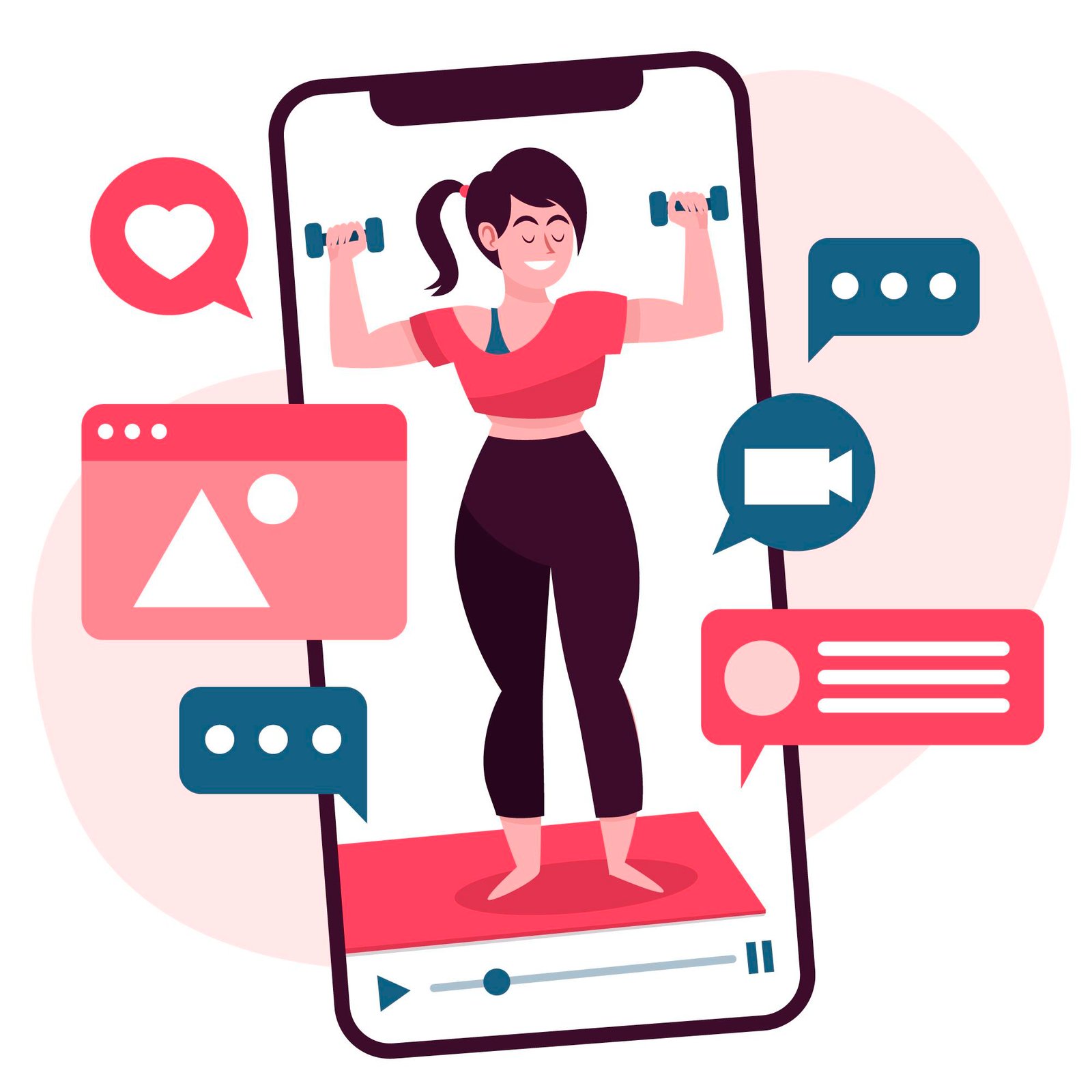Introduction
In recent years, the fitness industry has seen a technological transformation, largely driven by the rise of digital health solutions. Among these, Fitness App Development Services have emerged as a dominant force, revolutionizing how people approach health and wellness. In 2025, the global demand for these services is skyrocketing—thanks to growing health awareness, AI integration, wearable technology, and the shift toward personalized wellness experiences.
But what exactly are fitness app development services? Why are they becoming indispensable for startups, gyms, health brands, and personal trainers? And what future trends are shaping this booming market in 2025?
This comprehensive article explores everything you need to know about Fitness App Development Services—from what they include, to the technology stack, business models, market trends, and reasons for their massive growth this year.
What Are Fitness App Development Services?
Fitness App Development Services refer to end-to-end software development solutions provided by technology companies to create mobile, web, or cross-platform applications focused on health, wellness, and fitness. These services typically include:
1. Consultation and Planning
It begins with understanding the client’s goals—whether they want a workout planner, diet tracker, fitness tracker, meditation guide, or an all-in-one wellness platform. Business analysis, user research, and competitor audits are performed at this stage.
2. UI/UX Design
A crucial part of fitness apps is user experience. Development teams create interactive, intuitive designs that keep users engaged. The design phase often includes wireframes, prototypes, and usability testing.
3. Custom App Development
This includes both front-end and back-end development using suitable technology stacks. Popular features include:
-
User profiles & goal setting
-
Activity tracking (e.g., steps, calories, workouts)
-
AI-powered fitness plans
-
Integration with wearables (Fitbit, Apple Watch)
-
Live workout sessions and video tutorials
-
Nutrition and diet tracking
-
Push notifications and gamification
4. Third-party Integration
Apps often need integration with:
-
Payment gateways (Stripe, Razorpay)
-
Wearables (Google Fit, Apple Health)
-
Social media logins
-
CRM and analytics platforms
5. Testing and QA
Functional, performance, and security testing ensures the app is bug-free and safe for user data.
6. Deployment and Maintenance
Post-launch support is a critical part of Fitness App Development Services. Developers regularly update the app, fix bugs, scale features, and ensure compatibility with new OS updates.
Types of Fitness Apps Built in 2025
In 2025, fitness apps are more specialized and personalized than ever. The most popular types include:
1. Workout and Exercise Apps
These guide users through pre-defined or personalized workouts. AI-based recommendations and real-time feedback make them highly engaging.
2. Nutrition and Diet Apps
They help track calories, set meal goals, scan food barcodes, and even offer personalized meal plans.
3. Activity Tracking Apps
These apps collect data from wearables to monitor steps, heart rate, sleep, hydration, etc.
4. Personal Trainer Apps
Virtual fitness coaching is growing rapidly. These apps allow trainers to assign plans, track client progress, and conduct live sessions.
5. Meditation and Mental Wellness Apps
With rising mental health awareness, these apps provide guided meditation, stress-relief routines, and mood tracking.
6. Social Fitness Apps
These platforms allow users to form fitness communities, join challenges, and share progress with friends or public groups.
Why Fitness App Development Services Are Booming in 2025
1. Post-Pandemic Health Awareness
The COVID-19 pandemic reshaped global health priorities. Users today are more proactive about preventive health, fitness, and overall wellness—creating unprecedented demand for digital fitness tools.
2. Rise of Hybrid Fitness Models
Fitness apps now complement in-person gym training. Many gyms and studios in 2025 offer a hybrid model—combining offline sessions with app-based tracking, progress analytics, and virtual coaching.
3. Personalization Through AI
AI has become a game-changer in fitness app development. From recommending workouts based on user goals to predicting fitness plateaus, AI ensures a tailored experience—dramatically increasing user retention.
4. Wearable Technology Integration
Smartwatches and fitness bands are now mainstream. Fitness app development services include seamless integration with wearables, providing users real-time health data and actionable insights.
5. Subscription-Based Monetization
Many fitness apps use a freemium or subscription model—offering free features with paid premium services. This model has proven sustainable and profitable, encouraging more businesses to invest in fitness apps.
6. Corporate Wellness Programs
Organizations are investing in fitness apps as part of employee wellness programs. Custom-branded apps built by development companies offer health tracking, fitness rewards, and community engagement features.
7. Influencer-Led Fitness Apps
Fitness influencers and content creators are launching their own apps to monetize their community. Fitness App Development Services help them create branded platforms with exclusive content and paid subscriptions.
How to Choose the Right Fitness App Development Company
If you’re planning to invest in Fitness App Development Services, consider these factors:
-
Industry Experience
Check if the company has built fitness, health, or wellness apps before. -
UI/UX Capabilities
Fitness apps require top-tier design to retain users. -
Tech Expertise
Ensure the company works with modern tech stacks: Flutter, React Native, AI/ML, wearable integration, etc. -
Post-Launch Support
Long-term success depends on updates, bug fixes, and feature scalability. -
Data Security Compliance
Apps must follow GDPR, HIPAA (if dealing with health data), and other regional privacy laws. -
Client Reviews & Case Studies
Real-world results and satisfied clients speak volumes.
Business Models for Fitness Apps in 2025
-
Freemium Model – Basic access is free, advanced features require a subscription.
-
In-App Purchases – Users can buy workout plans, diets, or equipment guides.
-
Ad-Based Model – Monetize through ads, especially effective in free apps with a large user base.
-
Sponsorships – Brands partner with fitness apps to reach targeted audiences.
-
White-Label Apps – Sell customizable apps to trainers, gyms, or corporates.
Future Trends in Fitness App Development (Beyond 2025)
-
AI Fitness Coaches – Fully autonomous, chatbot-based personal trainers.
-
Mental Health + Fitness Fusion – Holistic wellness platforms that blend physical and mental health.
-
AR/VR Workouts – Home workouts become interactive with AR glasses or VR headsets.
-
Biofeedback-Based Training – Real-time muscle response or heart variability-based training plans.
-
Voice-First Interfaces – Voice-guided workouts via smart speakers and wearables.
Final Thoughts
In 2025, Fitness App Development Services are not just a tech trend—they are the foundation of a digital fitness revolution. With growing awareness around health, the rise of wearable tech, and the need for personalized wellness experiences, businesses of all kinds are investing in fitness app development.
Whether you’re a fitness brand, gym owner, influencer, or healthcare provider, partnering with a reliable fitness app development company can help you deliver real value, drive user engagement, and build a profitable digital product. The fitness app market is not only booming—it’s transforming lives, one workout at a time.












Leave a Reply